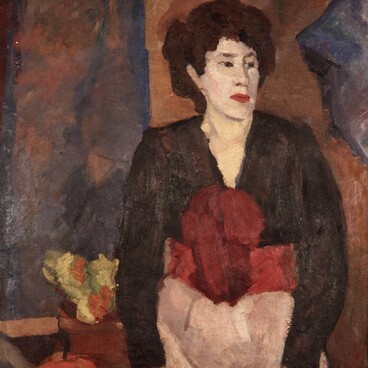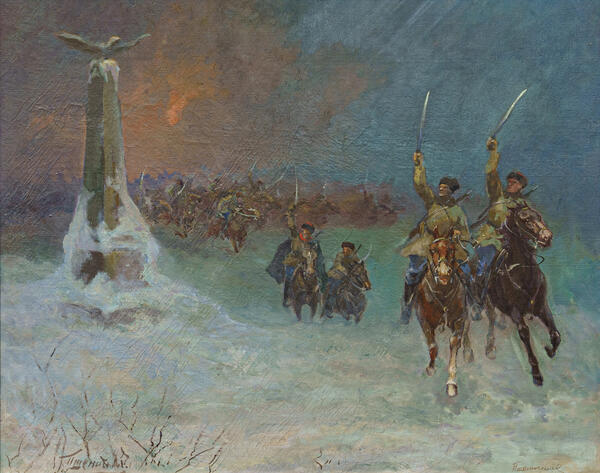Vasily Sergeyevich Pshenichnikov was a Russian and Soviet artist. In addition to easel painting, he also contributed to propaganda art and created social and political posters. He depicted scenes from Russian and Soviet history, hunting scenes, and landscapes.
Vasily Pshenichnikov was born in Moscow in 1882. The son of a military man, he received his primary education at the 2nd Moscow Cadet Corps. Later, he graduated from the Odessa Junker School. He volunteered to go to the Russo-Japanese War. In 1904, he was seriously wounded at the Dalinsky Pass.
During the convalescence period, Vasily Pshenichnikov met the family of the artist Ivan Panteleimonovich Fyodorov-Kerchensky and later married his daughter. With the support of this family, he entered the world of art and in 1909, started auditing courses at the Imperial Academy of Arts in Saint Petersburg. In 1912, the artist started regularly exhibiting his works.
The artist’s life was closely connected with the military which determined his interest in the battle genre. In many of his works, Vasily Pshenichnikov depicted the events of the Russian Civil War and the Great Patriotic War, captured the dynamics of battles and cavalry attacks, and celebrated the heroic deeds of the people.
In his numerous landscapes, the artist praised the beauty of the Crimea, Central Asia, and the Urals.
“On the Way to Ai-Petri” from the collection of the Khimki Art Gallery is one of the Crimean landscapes. The artist depicted a cloudy summer day. In the foreground, he showed a small section of a curvy mountain road leading to the top of the Crimea’s highest mountain. There is a large gray boulder, hiding the steep turn of the road. In the distance, there are the rocky slopes and jagged peaks of Ai-Petri. The houses scattered at the foot of the mountains are probably the outskirts of Yalta.
The artist organized the composition in such a way that the viewer feels like they are climbing up the mountain. A curvy road runs upwards, rounding the large boulder, and there are crowns of trees at the side of the road. It means that behind a small stone fence, there is a precipice. A beautiful panorama of mountain peaks opens up before the viewer.
In this landscape, the artist conveyed his
admiration for the majestic beauty of Crimean nature.



